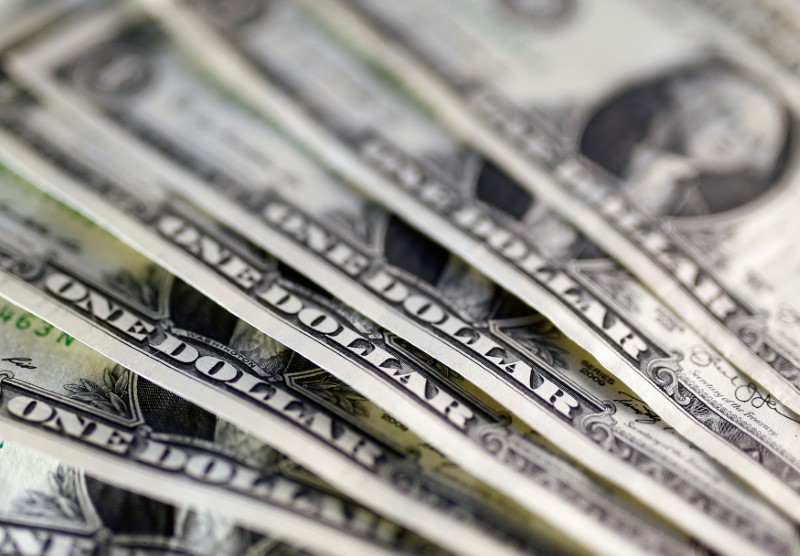* French, German stocks slip after mixed Friday on Wall St
* Britain's FTSE gains as sterling weakens
* U.S. Dollar gains for third straight session
* Oil hits 2019 high on Venezuela sanctions
* China markets closed all week for Lunar New Year
By Karin Strohecker
LONDON, Feb 4 (Reuters) - World stocks clung to near two-month highs on Monday, with the dollar strengthening and oil prices racing to a 2019 peak, though some European bourses struggled as momentum provided by U.S. employment and manufacturing data started to fade.
MSCI's All Country World Index .MIWD00000PUS , which tracks stock markets in 47 countries, traded within a whisker of Friday's two-month high thanks to gains in Hong Kong .HIS , Australia .AXJO and Japan .N225 . In London, the FTSE .FTSE rose 0.3 percent to a two-month peak after sterling softened against the dollar. the pan-European STOXX 600 .STOXX slipped 0.2 percent, with Paris's CAC .FCHI losing 0.6 percent and Frankfurt's DAX .DAX down 0.3 percent as a flurry of corporate news triggered sharp individual moves. .EU
U.S. stock market futures also pointed to a more muted start to the week, with both S&P 500 and Nasdaq e-mini futures ESc1 NQc1 treading water.
"The tone we took away from the end of last week and the dovish tilt from the Federal Reserve is positive for risk assets," Michael Hewson, chief markets analyst at CMC Markets in London.
"The benign outlook for monetary policy should support risk assets but the elephants in the room are Brexit, trade talks and political instability in Europe," Hewson said.
The Sentix survey on investor morale in the euro zone released on Monday hit its lowest level in more than four years in February, largely due to concerns about Britain's looming departure from the European Union. looked quite different to data from the United States, where non-farm payrolls on Friday jumped by a stronger-than-forecast 304,000 jobs in January - the largest gain since February 2018. That report, along with better-than-expected January ISM manufacturing activity numbers, pointed to underlying strength in the world's biggest economy. Asian markets were closed on Monday for the Lunar New Year. China's financial markets are closed all week, while those in South Korea are shut until Thursday.
DOLLAR GAINS
In FX markets, the dollar index .DXY extended gains for a third straight day, strengthening 0.1 percent against a basket of currencies. The greenback climbed a third of a percent to 109.89 yen JPY= while the euro was slightly lower at $1.1447 EUR= after pulling back from Friday's high of $1.1488.
Sterling GBP= softened towards a one-week low as Prime Minister Theresa May met lawmakers to try and overcome a parliamentary impasse that raised fears among investors about a disorderly 'no-deal' Brexit. GBP/
Yet analysts were watching closely how long the momentum in the dollar could last.
"Overall, the emergence of stronger-than-expected U.S. economic data should help to ease downside risks for the U.S. dollar in the near-term following the recent dovish shift in Fed policy," Lee Hardman at MUFG Bank wrote in a note to clients.
"However, it is unlikely to prove sufficient to trigger a sustained turn around for the U.S. dollar."
China's yuan CNH= weakened 0.3 percent in offshore trading despite data showing that China's sprawling services sector maintained a solid pace of expansion in January, albeit at a slower pace, offering continued support for the world's second-largest economy as manufacturing cools. benchmark 10-year U.S. Treasury yield was at 2.6948 percent US10YT=RR after climbing nearly 6 basis points on Friday to pull away from a four-week low of 2.619 percent hit earlier last week.
In commodity markets, Brent crude futures LCOc1 hit a two-month high close to $64 a barrel as OPEC-led supply cuts and U.S. sanctions against Venezuela's petroleum industry offset forecasts of weaker demand and an economic slowdown. O/R
Spot gold XAU= fell 0.5 percent to their lowest in nearly a week to $1,310.76 per ounce, having hit $1,326.30 on Thursday - its highest since April 26.
